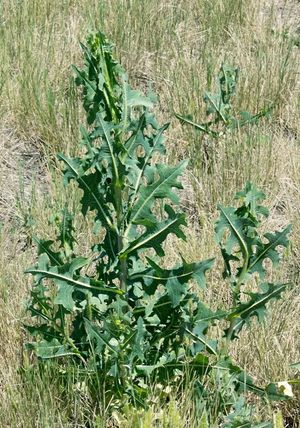Prickly lettuce milkweed could turn Eastern Washington into new supplier of natural rubber
A common, drought-resistant weed known as prickly lettuce, which tends to flourish across the Inland Northwest, could be turned into a new cash crop and possibly transform the region into a much-needed producer of natural rubber, a team of Washington State University researchers say.
The research team found that prickly lettuce, a form of milkweed, contains enough genetic similarities to rubber that it could become a new source of the raw material if carefully cultivated on a large scale. WSU weed scientist Ian Burke, doctoral student Jared Bell and molecular plant scientist Michael Neff described their research in a recent edition of the Journal of Agricultural and Food Chemistry.
The potentially usable raw materials come from the milky white sap that bleeds from its stalk, and WSU says the plant could be bred to enhance desired traits for the Pacific Northwest's growing conditions.
Rubber is a primary ingredient in countless everyday items but the main natural source, the Brazilian rubber tree, is threatened by disease and synthetic rubber is reliant on petrochemicals. Burke had seen an earlier study establishing that the latex in prickly lettuce is similar to the polymers in natural rubber and knew that the weed tends to flourish here.
“It occurred to me that we could grow the heck out of prickly lettuce in eastern Washington,” Burke said in prepared remarks.
You probably wouldn't even need a green thumb.
